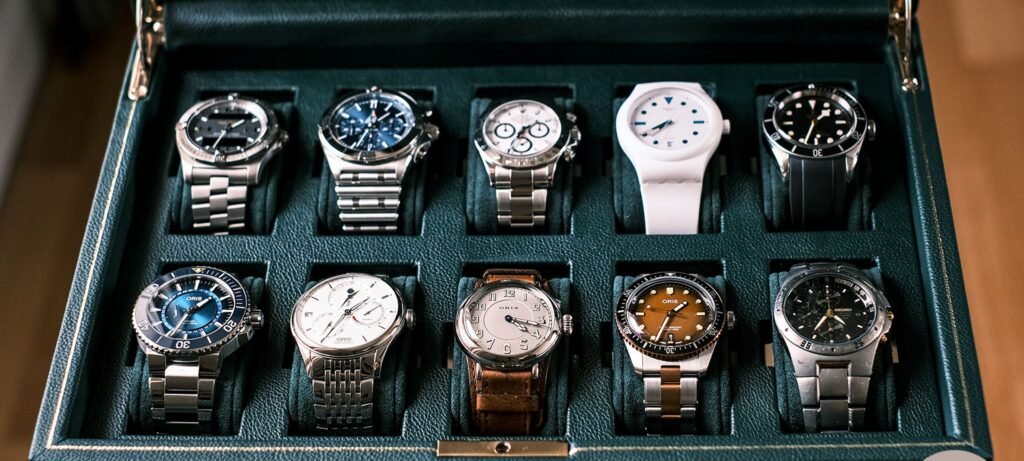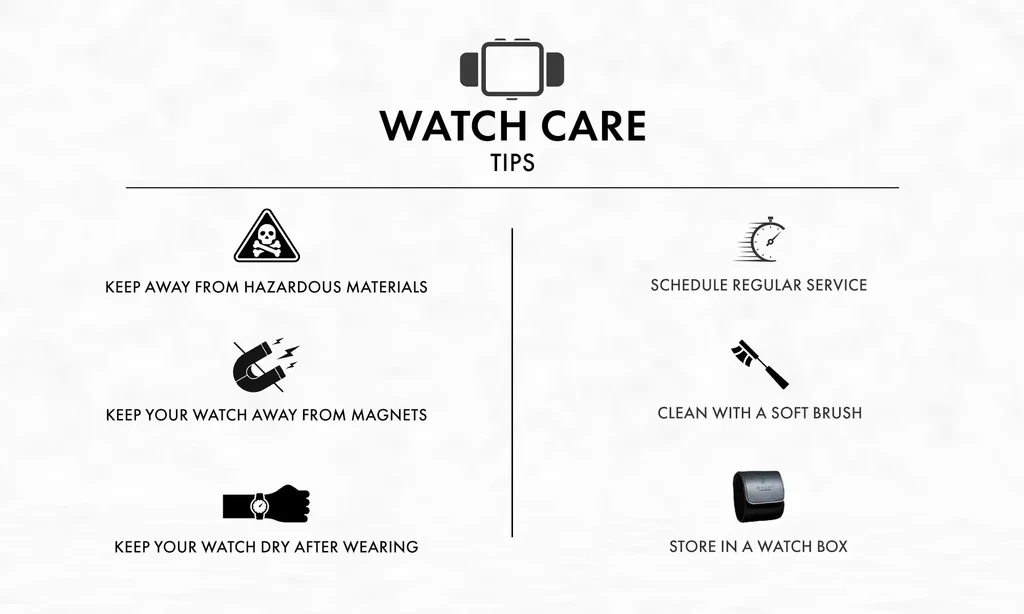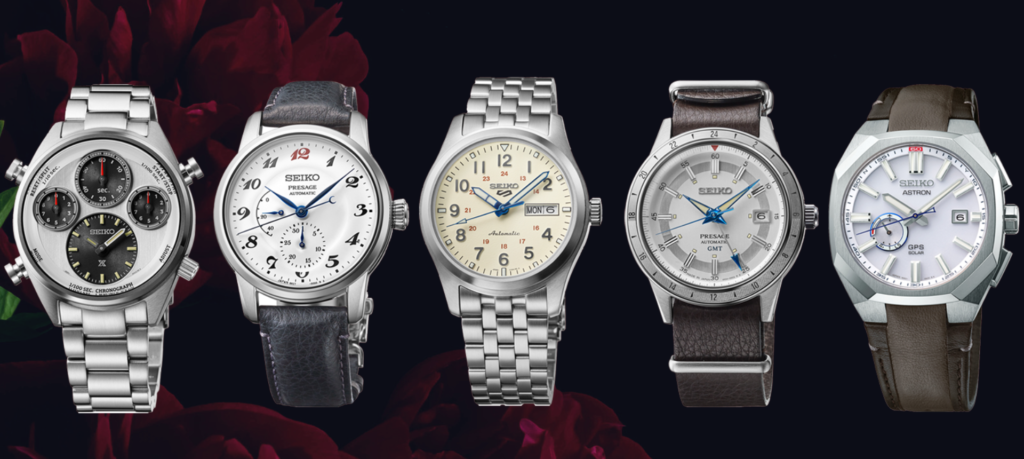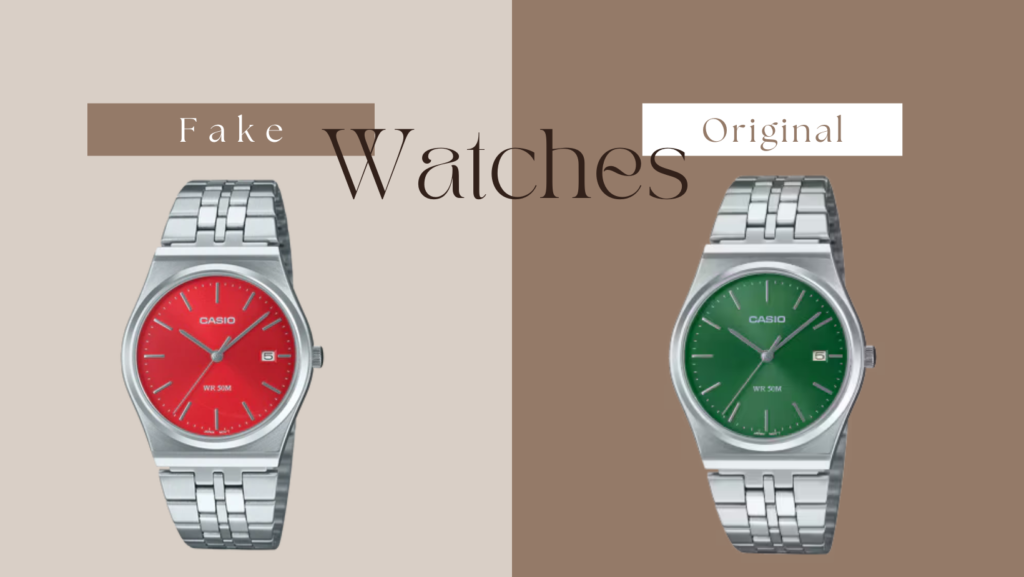
A well-maintained watch collection is a testament to both passion and precision. Whether you own a few luxury timepieces or an extensive collection, proper care ensures your watches remain in top condition for years to come. Here are eight best practices that every watch collector should follow.

1. Ensure Proper Clasp Alignment on Bracelets
A comfortable watch fit is not just about wrist size; clasp positioning plays a significant role. Many collectors overlook this aspect, leading to discomfort and an imbalanced fit. To achieve optimal comfort, ensure that fewer links are on the 6:00 side of the bracelet, helping to center the clasp correctly. A properly aligned clasp prevents irritation and enhances wearability.
2. Handle Strap Changes and Bracelet Sizing with Care
Changing straps or resizing bracelets requires caution to avoid accidental damage. Scratches on the lugs are common when using spring bar tools without proper control. To prevent this, apply tape on the back of the lugs while swapping straps. Even quick-release spring bars can cause scratches if handled carelessly. Additionally, when adjusting bracelet screws, ensure they are properly secured to avoid cross-threading issues.
3. Understand the Limitations of Sapphire Crystals
Sapphire crystals are known for their scratch resistance, but they are not indestructible. They can be scratched by harder materials like diamonds and are vulnerable to shattering upon impact. Furthermore, anti-reflective (AR) coatings can develop visible scratches, even if the crystal remains intact. Collectors should also appreciate the resilience of acrylic crystals, which can be polished to remove scratches.
4. Properly Secure Screw-Down Crowns
Screw-down crowns enhance water resistance, but improper handling can lead to issues. Always ensure the crown is fully screwed in before exposing the watch to water. Cross-threading is another common problem that can render the crown unusable, requiring costly repairs. Avoid over-tightening and handle with care to maintain the integrity of the seal.
5. Avoid Overwinding and Wind Watches Off the Wrist
Winding a watch while it’s on the wrist can put undue stress on the crown stem, potentially causing damage. Always remove the watch before winding or setting the time. Overwinding is another concern, particularly for vintage timepieces. When you feel resistance while winding, stop immediately to prevent damage to the movement. Automatic watches have a built-in slipping mechanism to prevent overwinding, but manual watches require extra caution.
6. Change Date and Day Functions at the Right Time
Adjusting the date and day during the watch’s “danger zone” (typically between 8:00 PM and 4:00 AM) can damage the movement. Many watches engage their date-change mechanism during this period, making forced adjustments risky. To safely set the date, first advance the time past midnight to confirm AM/PM before making any changes.
7. Avoid Engaging Chronograph Pushers Underwater
Unless specifically designed for underwater use, chronograph pushers should never be engaged while submerged. Pressing pushers underwater can compromise the watch’s water resistance, allowing moisture to enter the case. Even if a watch is rated for water resistance, it’s best to avoid unnecessary risks and refrain from using pushers while in water.
8. Protect Watches from Magnetic Exposure
Magnetic fields are everywhere in modern life, from smartphones to speakers. Exposure to strong magnets can disrupt a watch’s balance wheel and affect timekeeping accuracy. Some watches feature magnetism-resistant materials like silicon, but not all timepieces have this protection. If you suspect your watch has been magnetized, a demagnetizer can quickly restore accuracy.
Conclusion

Every watch collector encounters mistakes along the way, but learning proper care techniques helps preserve the longevity and functionality of your timepieces. By following these best practices, you can keep your collection in pristine condition.


